VBBT – South Haven Beaches and Black River Channel
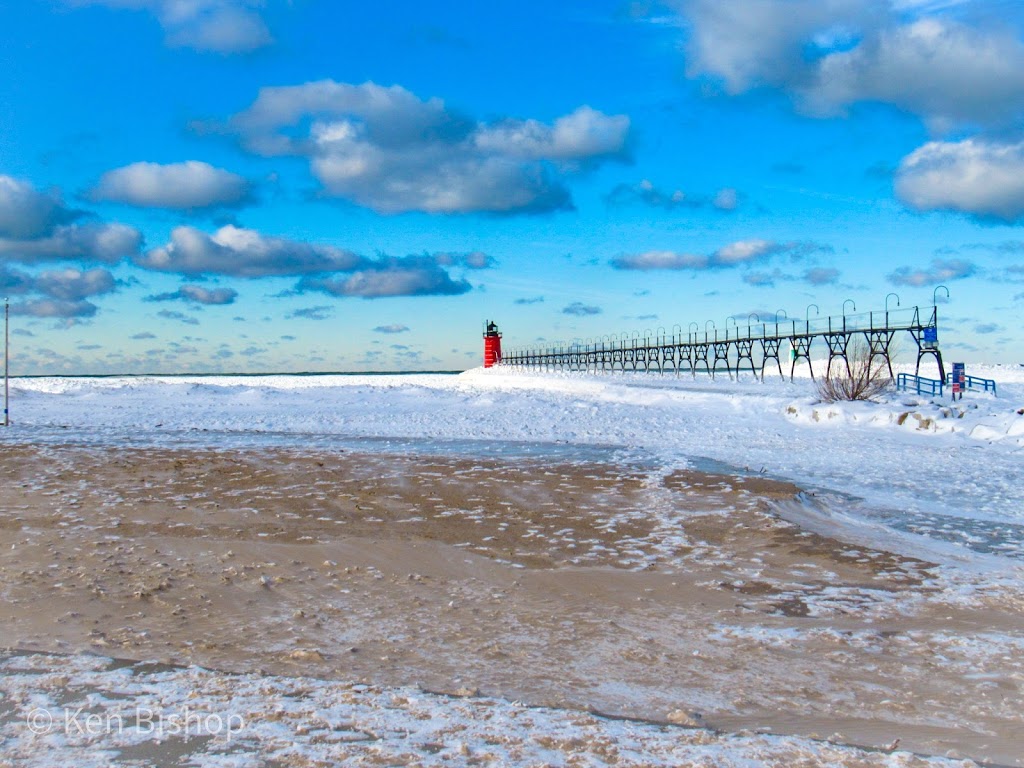
January 22, 2021
2 Comments
Hello readers! I am very excited to bring the second installment of the the Van Buren Birding Trail! If you are a first time reader of my blog, I have recently started a sizable project to bring detailed information about Van Buren County’s best birding locations. I am hoping to increase the awareness of Van Buren County’s birding potential and importance. For more details, search my blog’s archive!
Last week, we visited Wolf Lake State Fish Hatchery, one of the county’s most well-documented birding hotspots. This week, we are going to explore both of South Haven’s largest public beaches and the Black River Channel that separates them.
Van Buren County only has 13 miles of shoreline along Lake Michigan, so the public beaches and Black River Channel at South Haven are a critical stop for any birder trying to maximize their species count for the county. Although species recorded at both beaches is small, the actual number amd diversity of species that occur at these locations are potentially much larger. There is currently no regular lakewatch team that posts up at this location.
SOUTH HAVEN BEACHES/BLACK RIVER CHANNEL
 |
| The South Haven Lighthouse as seen from the South Beach parking lot. |
Address:
North Beach: 45 Lakeshore Drive South Haven, MI 49090
South Beach: 60 Water Street South Haven, MI 49090
Established: The pier and Lighthouse were constructed between 1870 and 1903.
Species Recorded:
North Beach: 108 (1/23/21)
South Beach: 85 (1/23/21)
Pet-friendly: Dogs are not allowed on South Haven’s Public Beaches.
Amenities: Parking with handicapped accessible spots and sidewalks are offered at both beaches. Paid Parking from May 15th to September 15th after 9 AM. Parking is free outside of the dates and times specified. During peak tourist season both beaches offer public restroom facilities. During the off-season 2 port-a-potties are located near the Channel on the South Beach. There are no public restrooms offered at the North Beach in the off-season. Both piers are open to the public, but one should only walk them when the conditions are safe. Many local shops and restaurants are located along Phoenix Drive. In addition to birding one could visit several local winery tasting rooms and the Michigan Maritime Museum.
Habitat: North Beach offers a 1/4 mile long sandy beach that is attractive to Gulls and shorebirds. The pier accessible from the North Beach is also popular with Gulls. The South Beach is similar in length and also offers a small amount of dune habitat and a long bluff that is publicly accessible and ideal for lakewatches. The Black River Channel and the marina just inside of the piers attracts waterfowl and Gulls.
Resident Species:
As one would expect at many if Michigan’s beaches, Ring-billed Gulls and Herring Gulls are common year-round. Canada Geese and Mallards are common around the piers and the marina. Many of the Mallards along the Black River Channel are of domestic decent or have hybridized with domestics, but plenty of pure wild Mallards are mixed in. European Starlings, House Sparrows, and Rock Pigeons are common around town. Any of Michigan’s backyard birds may be heard or seen around the cottages or along the Channel. Blue Jays, Northern Cardinals and Tufted Titmice are the most common of these. A fascinating population of American Crows also frequent the Beach, often interacting with the Gulls and have developed some interesting foraging techniques not often seen by inland Crows.
Winter (November to March):
Visiting the beaches and Channel during the winter months can often prove productive. Temperature, wave conditions, wind direction and ice are all conditions that can play a huge part in how many birds you may see. It is wise to check the forecast before making a visit to ensure it is even worth your time. The Black River Channel usually has pockets of open water, even in the coldest of temperatures. This can be advantageous to a birder,, as it may result in high concentrations of waterfowl. Mild winters often mean lots of open water which usually means more birds.
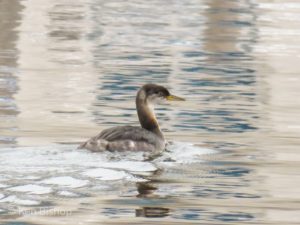 |
| Red-necked Grebe in the Black River Channel |
Waterfowl: Waterfowl counts and diversity can often vary day to day. Any number of Michigan’s wintering duck species could be seen off the pier or in the Channel. Red-breasted Mergansers and Common Goldeneye usually make up the majority of the waterfowl present at any given time. As winter moves a long, there is often a noticeable uptick of White-winged Scoters, which can move up the Channel quite aways. Bufflehead, Scaup and Redheads are also quite frequent but not as reliable. Distant Long-tailed Ducks may be seen flying low over the horizon while scoping the open water from the piers. It is always worth checking the marina for Red-throated Loons, Horned Grebes, Red-necked Grebes and American Coots especially in December or March.
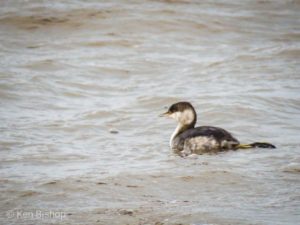 |
| A Horned Grebe pushes itself back into the water as it nearly got washed ashore. Grebes are almost immobile on land. |
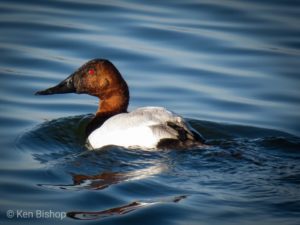 |
| Canvasback are uncommon around South Haven, but are always possible |
Raptors: The Winter months are not very notable for raptors. It may be possible to find a Bald Eagle or Merlin. Although very rare, Snowy Owls may visit the pier or beaches to rest and refuel. Remember to keep your distance from the owl if you are lucky enough to find one!
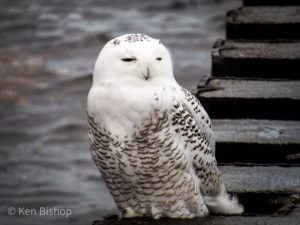 |
| One of 3 Snowy Owls that stopped to rest on the South Haven North Pier on November 22, 2017. |
Seabirds: Gull counts and diversity hinges on the weather. Mild winters can make gulling extremely exciting and productive. North Beach is always the most productive location to see Gulls. So long as there is open water, expect to find multiple Great Black-backed Gulls mingling with 100’s of Herring and Ring-billed Gulls. Glaucous Gulls are uncommon and rarely more than one is present. Lesser Black-backed Gulls are annual and can occasionally be found mingling with other Gulls. Iceland Gulls have been reported, but are not annual.
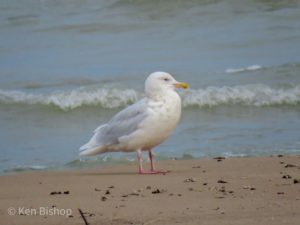 |
| Glaucous Gull. One of the most desirable gull species to find around the Great Lakes in winter. South Haven is one of the best spots in the state to see them. |
Passerines: Don’t expect many songbirds. Sometimes flocks of Horned Larks, Lapland Longspurs and/or Snow Buntings stop at the beach. You can also check along the bluffs by the South Beach for Dark-eyed Juncos and American Tree Sparrows.
Spring (March – June)
Early spring usually sees an uptick in species diversity. Many of the winter species can still be seen at this time. Hawks may be seen migrating north along with swallows, gulls and terns. As summer approaches beachgoers increase. It is wise to time your visits to very early morning starting in May.
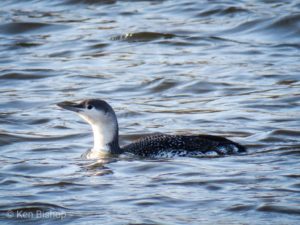 |
| Red-throated Loon in non-breeding plumage. |
Waterfowl: March/April is still a good time to check the Channel and lake for waterfowl. With the right conditions, you may see large flocks of Scaup, Teals, Goldeneye, etc moving northward. Scoters may fly close to shore in small numbers. Often Red-throated and Common Loons stop to feed where the Black River flows into Lake Michigan. Flocks of geese can sometimes be seen flying north.
Raptors: look for Eagles, American Kestrels, Merlin and Peregrine Falcons on the move. They often take advantage of the lakeshore, where prey may be abundant.
Shorebirds: Not many shorebirds are found in the spring but Sanderlings or Semipalmated Plovers may make a stop before beachgoers arrive.
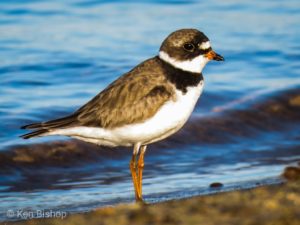 |
| Semipalmated Plover |
Seabirds: Early Spring sees large movements of Gulls. The variety can change daily. Look for Bonaparte’s Gulls in migration. Caspian Terns arrive in April. Common and Forster’s Terns can also be found foraging, migrating or loitering on the beaches. April also brings in Double-crested Cormorants. Look for them flying overhead in various quantities. Sometimes they may loiter on the North Pier.
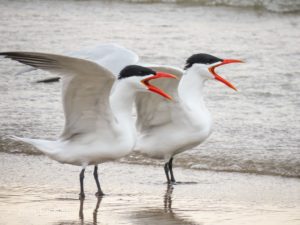 |
| Caspian Terns show up along Michigan beaches as early as April. |
Swallows: Barn and Bank swallows can often be found hunting over the water, usually in May.
Passerines: Finding passerines on the beaches can be rather tough and often flyovers have to remain unidentified. Nearby Stanley Johnston Park may offer a good opportunity to find migrant Warblers, Thrushes and Vireos.
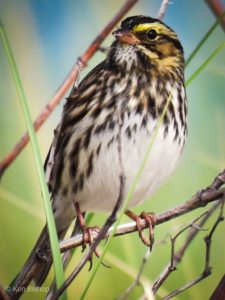 |
| Songbirds can be tough to find on the beaches of South Haven, but you might be surprised. This is a migrant Savannah Sparrow that was found in a small patch of shrubbery on the North Beach |
Summer (June to August):
This is definitely the most challenging time to bird the beaches as you will need to arrive early enough to beat out the beachgoers and most visits will not yield much.
Seabirds: Outside of Ring-billed and Herring Gulls, you may encounter the odd Bonaparte’s Gull. In August, one or two Hatch-year Lesser Black-backed Gulls stop by. You may see Caspian and Common Terns hunting the waters off the pier. Double-crested Cormorants are also common.
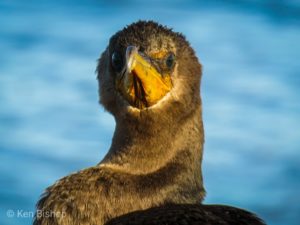 |
| Double-crested Cormorant |
Shorebirds: as early as July, shorebirds may begin passing through. August really sees the shorebird sightings climb. Arrive as early as possible. Sanderlings, Semipalmated Sandpipers and Semipalmated Plovers are the most common migrants to visit the beaches. The beaches are quite underbirded in the summer (for obvious reasons) and the shorebird occurrence and variety may actually be significantly higher than what we actually know. Two notable summer shorebird sightings are Red Knot (2018) and a Marbled Godwit (2020), which indicates to me that these beaches may hold a lot more shorebird secrets.
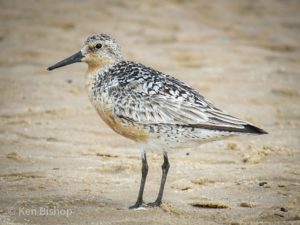 |
| This adult Red Knot was discovered on the South Beach in August of 2018. Unbelievably, it was running around among crowds of beachgoers. |
Swallows: Bank and Barn Swallows remain abundant through the summer.
Fall (August to November)
The peak time to bird the beaches begins in October. It is very similar to the spring report. I have noted anything that may be different.
Waterfowl: as early as September ducks begin to migrate. The season starts off with Teals and slowly shifts from dabblers to divers. Watching from the bluffs for an extended period of time could potentially produce high counts on any of Michigan’s migrant or wintering duck species.
Raptors: This is the best time to see Merlin, Peregrine Falcons and Eagles. Broad-winged Hawks can sometimes be seen migrating in kettles counting from 20 to 100 birds (until the end of September).
 |
| Merlin are regularly spotted hunting for hapless songbirds, especially in fall. |
Seabirds: Expect to see a gradual increase in gull variety. This is also the best time of year to scan the Gulls for state-level rarities. Terns will continue to push South into October. This is also the best time of year to look for Bonaparte’s Gulls.
Shorebirds: Similar to Summer. Black-bellied Plovers may stop on the beaches or pier to rest.
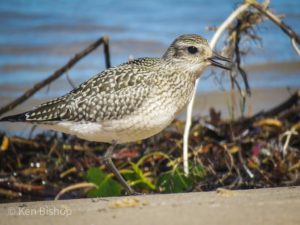 |
| Juvenile Black-bellied Plover |
Swallows: in September any of Michigan’s 6 breeding swallow species could be found feeding in the Channel or along the lakeshore.
Other thoughts:
The South Haven Beaches and Black River Channel are highly underbirded in comparison to other publicly accessible beaches like Tiscornia Park in Berrien County and Holland State Park in Ottawa County. Both of these locations have incredible species counts because they are birded almost daily. I believe the only reason South Haven doesn’t have similar counts is because it is not birded consistently. There are a number of “holes,” so to speak, in the reports listed on eBird for species that commonly or irregularly migrate through the area. For Fall in particular, visiting birders should keep in mind the possibility of the following species not yet reported: Black Tern, Sabine’s Gull, Franklin’s Gull, Little Gull, Purple Sandpiper, American Golden-Plover, Piping Plover, Ruddy Turnstone, Parasitic Jaeger, Baird’s Sandpiper, Pectoral Sandpiper and Least Sandpiper. In addition, I believe regular pelagic trips and a consistent lakewatch team would reveal new data and species that use the Lake Michigan shoreline as their route in migration.
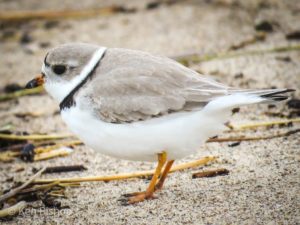 |
| The endangered Piping Plover nests on beaches in Northern Michigan. This is one of many species that has yet to be found on the beaches of South Haven during migration. |
Click to rate this post!
[Total: 1 Average: 5]
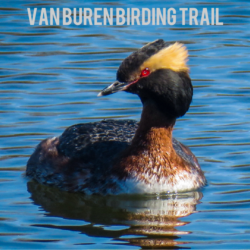
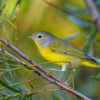
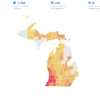
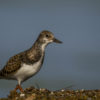
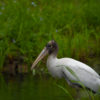
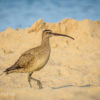

Another home run blog! Thanks Ken!
I really appreciate the support! I'm really hyped about this endeavor!